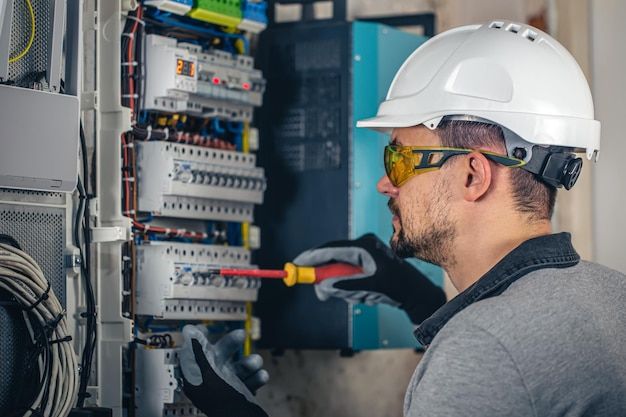As electric vehicles become more popular, many homeowners are considering installing EV chargers at home. However, before installing a Level 2 home charger, it’s crucial to ensure your electrical system can handle the increased power demand. In some cases, this may require either a Service Upgrade or a Panel Upgrade. But what’s the difference between these two upgrades, and under what circumstances is each needed? Let’s break it down.

Service Upgrade
What is a Service Upgrade?
A Service Upgrade refers to increasing the total electrical power available to a home or building. This upgrade involves enhancing the amount of electricity that the utility company (like BC Hydro) provides to the property. It is often necessary when the overall electrical capacity of your home is insufficient to handle additional loads, such as an EV charger, new appliances, or home renovations.
Key Features of a Service Upgrade:
- Increased total power supply: The most common type of service upgrade involves increasing the amperage (electrical capacity). For example, upgrading from 100amps to 200amps or 400amps, depending on personal needs.
- Involves utility company: Service Upgrade usually requires the utility company to change the wiring between the power grid and your home, upgrading the service drop, and replacing the electrical meter.
- Main breaker and meter upgrades: Service Upgrade requires main breaker upgrade to handle increased amperage.
When is a Service Upgrade Needed?
- Installation of high-power appliances such as EV charger/AC/Solar System, while current electrical system doesn’t have enough available power/amperages.
- Electrical infrastructure is outdated, and usually comes with frequent break tripping.
- Home Renovation or additions needs electrical system upgrade for modern technology.
Why is a Service Upgrade Important?
The Service Upgrade is crucial as it ensures that the electrical system can safely and efficiently handle the increased load demands for high-power appliances and EV chargers. Without sufficient capacity, the electrical system could become overloaded, leading to safety hazards or inconsistent power supply.
Panel Upgrade
What is a Panel Upgrade?
A panel upgrade involves replacing or upgrading the electrical panel (aka breaker box) in your home or building. Electrical panel is the system that distributes electricity to various circuits in your property, and a panel upgrade doesn’t change the total amount of power coming into the home but rather enhances the internal distribution of the power.
Key Features of a Panel Upgrade:
- Replacing the Electrical Panel (breaker box) with a newer model that can handle higher amperage or accommodate more circuits. For example, upgrading from a 100-amp panel to a 200-amp panel.
- Adding more circuits: A panel upgrade allows for the addition of more circuits for installing new appliances or equipment (like an EV charger).
- Upgrading outdated components: Older electrical panels may have outdated or insufficient circuit breakers, which can bring safety risks. A panel upgrade ensures that the system is up to code and safe to use.
When is a Panel Upgrade Needed?
- Installation of an EV charger or Major Appliances may require additional circuits or a higher-capacity panel.
- Frequent Breaker Tripping indicates that the panel is overloaded or outdated, making an upgrade necessary.
- Old/Outdated Electrical Panels need to be upgraded to a modern panel to improve safety and reliability.
Why is a Panel Upgrade Important?
A panel upgrade is crucial to ensure that the electrical system can handle electrical demands safely and efficiently. Not only does it allow you to add new circuits for major appliances such as EV charger or AC, but it also prevents the risks of overloading.
Summary table of Service Upgrade vs. Panel Upgrade
| Feature | Service Upgrade | Panel Upgrade |
| Usage/Purpose | Increase the total power supply; needed when overall electrical capacity is insufficient. | Improve the internal distribution of power; needed when panel is full or outdated (but the service is sufficient). |
| Amperage Increase | Yes (e.g., 100A to 200A) | No, the total power capacity is not increased. |
| Involvement of Utility Company | Yes | No |
| Cost | More expensive due to the utility company involvement and permit application. | Less expensive but still needs to hire a licensed electrician. |
Which Upgrade Do You Need for Getting Your EV Charger Installed?
Before installing EV charger at home, it’s essential to consult with a licensed electrician to do a power analysis for your home’s electrical system. They will check the current service capacity and panel status and determine whether a service upgrade or a panel upgrade is needed to ensure your home is safe and ready to handle the additional electrical demand of an EV charger.
At Amor Energy, we specialize in installing EV chargers and providing professional guidance on necessary upgrades. Whether you need a service upgrade, panel upgrade, or simply a dedicated circuit for your new charger, our licensed electricians will handle the process seamlessly, ensuring a safe and compliant installation.


